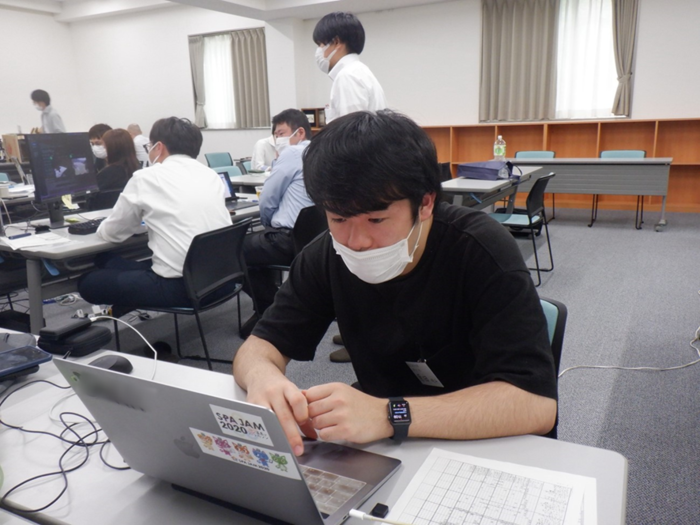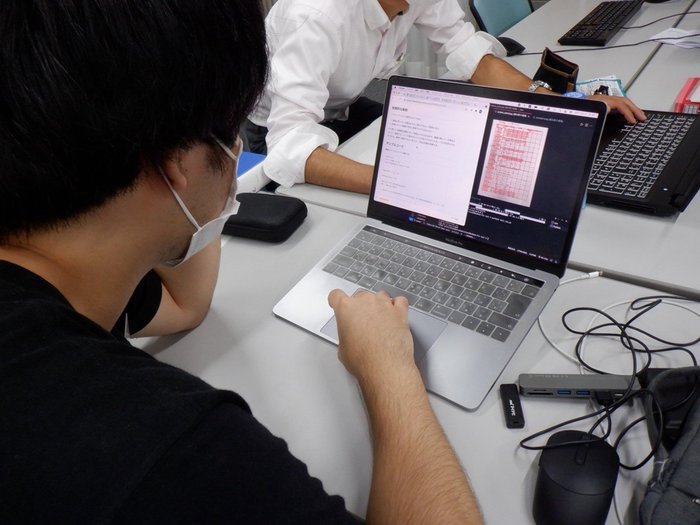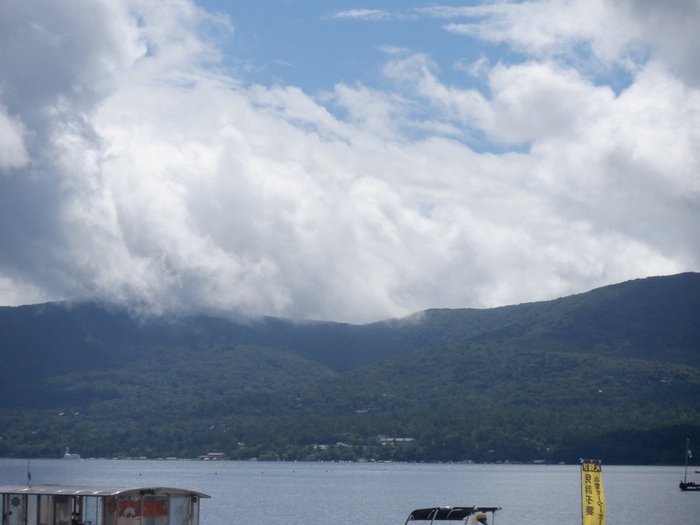ACTIVITYActivity reports
- HOME
- Activity reports
- Report on Completion of Internship at WISE Program Partner Institute IDEA Consultants, Inc.(HARADA, Course of Marine Resources and Environment)
Report on Completion of Internship at WISE Program Partner Institute IDEA Consultants, Inc.
(HARADA, Course of Marine Resources and Environment)
From August 17 to 21, I took part in an AI skills training camp in Yamanakako, Yamanashi Prefecture. Then, from August 24 to September 3, I participated in an internship in the Applied Modeling Division at the Institute of Environmental Informatics in Kanagawa Prefecture.
At the training camp in the first half, I worked on the streamlining of operations as part of the OCR team, with the end goal of automatically reading handwritten fieldnotes and outputting them to Excel, etc. Although I started with almost zero knowledge of OCR, I greatly expanded my understanding over the course of these four days. The four days were not enough time to develop my skills to the point where I could immediately apply them in my work, but I was able to learn a lot about how to use the libraries critical to image preprocessing such as Open CV, making it a meaningful experience. Cetacean surveys, which are related to my own research, are conducted in an environment where things get wet, meaning that pen and paper are still used. Naturally, this results in data input taking a great deal of time, so I would like to try improving this using OCR.
In the internship with the Applied Modeling Division in the second half, I first worked on the task of generating superhigh-resolution images. I was able to obtain superhigh-resolution images on a fine scale using a super-resolved model. In doing so, I took care to prevent detailed information such as altitude data from getting lost. The next task that I worked on was automatic image annotation for semantic segmentation. In supervised learning of images, images with annotations need to be provided as labels of correct answers. Preparing these takes a huge amount of time, so the task was to try automatically generating those images. I used the contrastive learning model, which is a self-supervised learning model. Although I was able to obtain correctly color-coded results as output, my progress stopped short of being able to assign similar items the same color, so in the end, I was not completely satisfied. Nonetheless, part of cetacean research consists of matching specimens using photographs, and I think that automatic image annotation could be applied to that research, so I intend to study it further in the future. The final task was examining methods of producing complete visualizations from local data using fish school models. Although I was supposed to use a neural process to supplement the data, it was too difficult for me to understand, so the task was paused, and I worked on improving my understanding of neural processes. I ended up implementing a neural process while looking at GitHub and dissertations. Instead of simply using a library, I was able to improve my understanding by confirming how each one works, which was very interesting and educational for me. Furthermore, as survey data cannot be obtained for the entire area in cetacean surveys, I would like to explore whether models can be made more accurate by supplementing local data using neural processes.
Although the internship lasted about three weeks in total, I felt like the time went by very quickly. Unfortunately, since the second half of the internship was conducted partially online due to the Covid-19 pandemic, I did not have many opportunities to communicate with the employees. However, overall, it was a productive time for me, as I was able to connect with many people and come in contact with various technologies. In conclusion, I hope to apply this valuable experience in the future and pursue further study. Thank you.
HARADA, 1st year student, Course of Marine Resources and Environment




